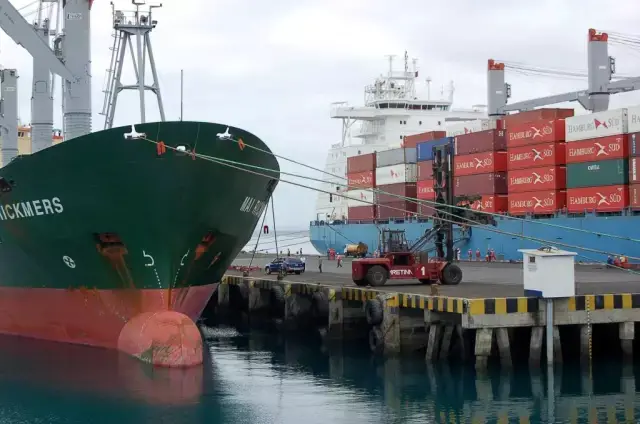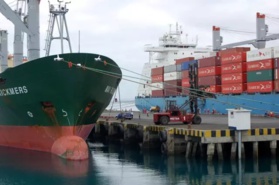By Li Yincai Source: People’s Daily and Global Times
China has increased its diplomatic efforts toward developing countries, especially in Latin America, since the new government came into office in 2013. Chinese leaders visited Latin America five times from 2001 to 2012, and once a year from 2013 to 2016 - much more frequently than before. President Xi Jinping made official visits to Latin America in 2013 and 2014, and the ongoing one from November 17 to 23 is the third time that he visited the region.
While China is actively developing its export-oriented economy, Latin American countries such as Brazil, Argentina and Venezuela are seeking more opportunities to cooperate with the world's second-largest economy, and attempting to hitchhike on China's rise to help themselves out from domestic economic difficulties.
Although Latin America is not included in China's One Belt and One Road initiative, overall Sino-Latin American cooperation has seen rapid improvement.
Xi proposed to build a "hand-in-hand community of common destiny" with Latin American countries in 2014. In the same year, the Forum of China-Community of Latin American and Caribbean States was officially established, and thence the bilateral cooperation has been upgraded into overall cooperation between China and 33 Latin American countries as a whole. In 2015 the Chinese government set up the post of special representative on Latin American affairs.
China's strategic partnership network in the region is worth attention. China established comprehensive strategic partnerships with Brazil, Peru, Mexico, Argentina and Venezuela, and strategic partnerships with Chile, Ecuador and Costa Rica from 2012 to 2015. China's relationship with its major economic and trade partners in Latin America has been upgraded in only four years.
Improved diplomatic relations have boosted economic development. While world economies are struggling with recession, trade contraction and economic upheaval, Sino-Latin American trade has maintained steady development due to their economic complementarity and China's active economic diplomacy in the region.
Statistics from the Ministry of Commerce suggests that Chinese enterprises have invested heavily in Latin America. China's FDI (Foreign Direct Investment) in Latin America reached $106.1 billion by 2014, almost three times that of Africa.
A report from HSBC suggests that 13 Latin American countries absorbed $83.9 billion in investment from China from 2005 to the first half of 2013, among which investment in Brazil, Venezuela, Argentina and Ecuador accounted for 76 percent.
China's investment in Latin America surged in 2015. Its non-financial investment in the region reached $21.46 billion in 2015, an increase of 67 percent from 2014, making 18.2 percent of China's total FDI. The growth rate is much higher than in other regions. There are more than 1,500 Chinese enterprises in Latin America at present.
However, risks in Sino-Latin American economic cooperation should be squarely faced. Venezuela's economy shrank by 5.7 percent in 2015, and its inflation rate reached a peak of 180 percent. The instability of Nicolas Maduro's regime has caused the economic situation to deteriorate. Construction of the China-funded Tinaco-Anaco Railway, worth of $7.5 billion, has been suspended due to debt problems. A number of huge loans from China valued at $47 billion are at risk as well.
But in the meantime, the potential for cooperation with more Latin American countries should be tapped, and the engine for Sino-Latin American cooperation should be further improved.
Cooperation in energy, infrastructure, agriculture, manufacturing, technological innovation and information technology fits Latin America's industrial restructuring and should be enhanced by both sides.
Industrial cooperation can be a new growth point. Following de-industrialization in the 1980s, Latin American countries need to develop manufacturing, and meanwhile China has accumulated excessive funds and capacity. The Ministry of Commerce predicted that China's investment may exceed $500 billion in the next five years, growing by 10 percent annually.
Frequent top-level visits and economic diplomacy that explore emerging markets in Asian, African and Latin American countries serve to tackle China's challenges of inadequate demand and excess liquidity, speeding up domestic economic restructuring and promoting global economic growth.
In the past three years, China and Latin America have been exploring new cooperative projects. This will strengthen economic cooperation and make room for more cooperation between the two sides. It will also alleviate the pressure put on China by the US-led Trans-Pacific Partnership.
(The author is an associate research fellow with the Institute of International Relations, Shanghai Academy of Social Sciences.)
China has increased its diplomatic efforts toward developing countries, especially in Latin America, since the new government came into office in 2013. Chinese leaders visited Latin America five times from 2001 to 2012, and once a year from 2013 to 2016 - much more frequently than before. President Xi Jinping made official visits to Latin America in 2013 and 2014, and the ongoing one from November 17 to 23 is the third time that he visited the region.
While China is actively developing its export-oriented economy, Latin American countries such as Brazil, Argentina and Venezuela are seeking more opportunities to cooperate with the world's second-largest economy, and attempting to hitchhike on China's rise to help themselves out from domestic economic difficulties.
Although Latin America is not included in China's One Belt and One Road initiative, overall Sino-Latin American cooperation has seen rapid improvement.
Xi proposed to build a "hand-in-hand community of common destiny" with Latin American countries in 2014. In the same year, the Forum of China-Community of Latin American and Caribbean States was officially established, and thence the bilateral cooperation has been upgraded into overall cooperation between China and 33 Latin American countries as a whole. In 2015 the Chinese government set up the post of special representative on Latin American affairs.
China's strategic partnership network in the region is worth attention. China established comprehensive strategic partnerships with Brazil, Peru, Mexico, Argentina and Venezuela, and strategic partnerships with Chile, Ecuador and Costa Rica from 2012 to 2015. China's relationship with its major economic and trade partners in Latin America has been upgraded in only four years.
Improved diplomatic relations have boosted economic development. While world economies are struggling with recession, trade contraction and economic upheaval, Sino-Latin American trade has maintained steady development due to their economic complementarity and China's active economic diplomacy in the region.
Statistics from the Ministry of Commerce suggests that Chinese enterprises have invested heavily in Latin America. China's FDI (Foreign Direct Investment) in Latin America reached $106.1 billion by 2014, almost three times that of Africa.
A report from HSBC suggests that 13 Latin American countries absorbed $83.9 billion in investment from China from 2005 to the first half of 2013, among which investment in Brazil, Venezuela, Argentina and Ecuador accounted for 76 percent.
China's investment in Latin America surged in 2015. Its non-financial investment in the region reached $21.46 billion in 2015, an increase of 67 percent from 2014, making 18.2 percent of China's total FDI. The growth rate is much higher than in other regions. There are more than 1,500 Chinese enterprises in Latin America at present.
However, risks in Sino-Latin American economic cooperation should be squarely faced. Venezuela's economy shrank by 5.7 percent in 2015, and its inflation rate reached a peak of 180 percent. The instability of Nicolas Maduro's regime has caused the economic situation to deteriorate. Construction of the China-funded Tinaco-Anaco Railway, worth of $7.5 billion, has been suspended due to debt problems. A number of huge loans from China valued at $47 billion are at risk as well.
But in the meantime, the potential for cooperation with more Latin American countries should be tapped, and the engine for Sino-Latin American cooperation should be further improved.
Cooperation in energy, infrastructure, agriculture, manufacturing, technological innovation and information technology fits Latin America's industrial restructuring and should be enhanced by both sides.
Industrial cooperation can be a new growth point. Following de-industrialization in the 1980s, Latin American countries need to develop manufacturing, and meanwhile China has accumulated excessive funds and capacity. The Ministry of Commerce predicted that China's investment may exceed $500 billion in the next five years, growing by 10 percent annually.
Frequent top-level visits and economic diplomacy that explore emerging markets in Asian, African and Latin American countries serve to tackle China's challenges of inadequate demand and excess liquidity, speeding up domestic economic restructuring and promoting global economic growth.
In the past three years, China and Latin America have been exploring new cooperative projects. This will strengthen economic cooperation and make room for more cooperation between the two sides. It will also alleviate the pressure put on China by the US-led Trans-Pacific Partnership.
(The author is an associate research fellow with the Institute of International Relations, Shanghai Academy of Social Sciences.)
 Menu
Menu
 Investment in Latin America, despite risks, key for China development
Investment in Latin America, despite risks, key for China development

















